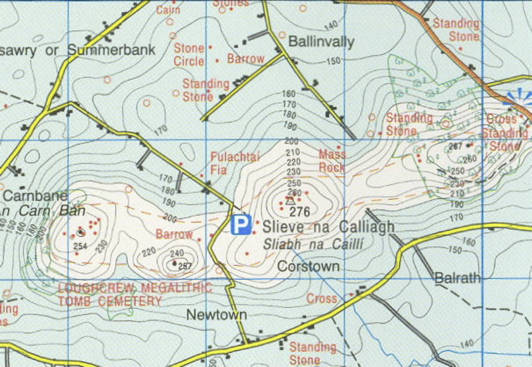East Munster Way
The East Munster Way is a 70km linear walking route of considerable variety, from riverside paths to woodland and from open mountain moorland to quiet country roads and it is part of the European E8 route. It starts in the town of Carrick-on-Suir, at the south east extremity of County Tipperary, and follows the River Suir upstream. The Suir, held by some to be the second-longest river in Ireland, is majestic and slow-moving at this point, overlooked by old castles and churches, and home to otters and herons. At the pretty village of Kilsheelan, the route crosses into County Waterford and ascends into the foothills of the Comeragh Mountains. It soon descends again to follow the Suir into the vibrant county town of Clonmel, which has a lot to offer those who linger. Leaving Clonmel the Way crosses a western outlier of the Comeraghs to reach the northern flanks of the Knockmealdown Mountains where it meanders westwards with spectacular views before descending to reach the town of Clogheen. Terrain consists mainly of forestry tracks, riverside tow paths and quiet tarmac roads: some off-road paths may be a little overgrown. Total aggregate ascent over the route is less than 1700m, but there are some short, steep climbs.
External Links
Trail Management
South East Tourism, 41 The Quay, Waterford. Tel: 051-875823 Web: www.southeastireland.com
Facilities
Car parking
At Start - on street in Carrick-on-Suir and limited near start/end of Way
At End - on street in Carrick-on-Suir and limited near start/end of Way
** PLEASE NOTE THERE ARE TRAIL FURNITURE ISSUES ON THIS WALK **
27 kms or 36% of the Way follows local roads. Waymarking issues.

Map Guides
East Munster Way Map Guide - EastWest Mapping - Out of Print

OSI Maps

Public Transportation
At Start: Expressway bus from Cork, Dublin, Galway, Waterford. Limited local bus (not on Sunday). Check with Bus Eireann.
Rail Check with Iarnrod Eireann.
At End: Some Expressway buses to Clonmel, Cork and Dublin and very limited local bus (not daily). Check with Bus Eireann.
National Trails Office from Dublin
John also suggests that the trail route was designed to include two counties and the jurisdiction of two walks officers. While Co Waterford now has a walks officer and Co. Tipperary has a Rural Recreation Officer, this route was put in place many years before either of these positions were established.
John from Roscommon
The trail follows the riverbank into Kilsheelan, a small village that looks inviting from a distance but which in reality is not very welcoming to walkers. Our enquiry in the pub near the bridge about food or tea/coffee was met with indifference and with being directed to another pub which was closed.
After Kilsheelin, things go from bad to worse. Instead of following the old towpath to Clonmel, the trail inexplicably crosses into County Waterford and follows the road for a mile before entering Coillte woodlands and doubling back to a point well before Kilsheelan, adding a pointless five miles or so to the trip. Clearly, the trail route was designed so as to include two counties and the jurisdiction of two walks officers, and not for the pleasure and amenity of walkers. The curse of Leader Funding grant limits, maybe? Makes no sense when there is an old towpath along the river; this trail should be used to keep this route open.
To make it worse, Clonmel taxi drivers rely less on meters and more on what seems to be an agreed excessively high rate for a trip back to Carrick-on-Suir.
Avoid.
P from Waterford
Also, and not wanting to be over critical, the marking around Russelstown forrest is extremely poor, especially as this part of the walk has changed over the years a bit of extra effort is required as it differs from the only guide book available.